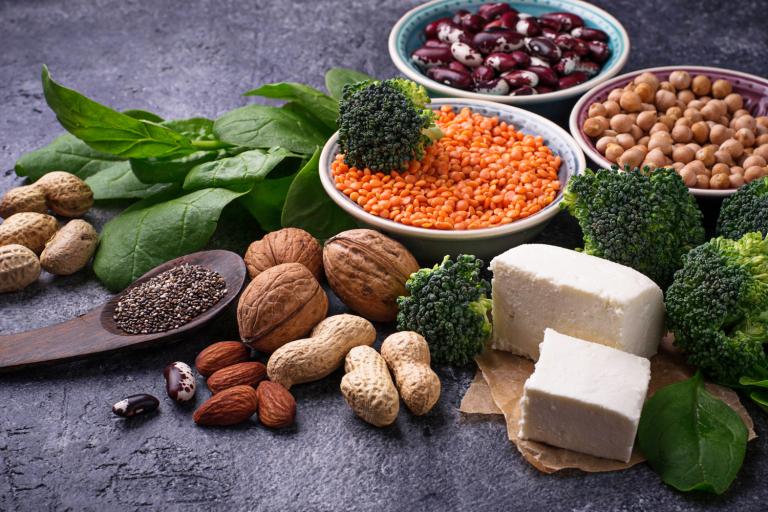You are what you eat, from your head down to your feet. And your feet might be standing near a plant that could end up on your plate.
Plant protein, the hot dietary option, has consumers rushing to buy legumes, quinoa, and soy products in a quest to be healthy and possibly live longer. Nearly 30 percent of Americans are, according to market research, trying to eat more plant protein because they believe it’s an affordable and sustainable food choice.
Reduce Disease Risks with Plant-Based Protein
Harvard Medical School researchers found that substituting 3 percent of calories from animal protein with plant protein was linked to a 12 percent reduced risk of dying from heart disease and a 10 percent reduced risk of dying from any cause during a 32-year study period.
“A well-planned plant-based diet... when you do it in a balanced way, it lowers your risk for heart disease and obesity,” said Andy De Santis, a registered dietitian in Toronto. “Switching to a plant-based diet is better in the long term.”
By “balanced,” De Santis and other health experts mean eating a wide array of plant-based foods—fruit and vegetables, nuts and seeds, and milk alternatives such as soy—rather than relying mostly on animal-based foods for protein.
The Academy of Nutrition and Dietetics states that “appropriately planned vegetarian, including vegan, diets are healthful, nutritionally adequate, and may provide health benefits for the prevention and treatment of certain diseases” including Type 2 diabetes, certain cancers, and hypertension.
Vegetarianism and veganism, while healthy, aren’t for everyone, De Santis said, so people who won’t forsake animal-based foods should consider the halfway point found in the Mediterranean diet. This emphasizes plant foods with sprinklings of dairy, meat, seafood, and poultry.
Plant Proteins & Amino Acids
Plant proteins alone can provide enough essential and nonessential amino acids for the human diet. But, as the American Heart Association suggests, those who rely solely on plant protein need to vary plant sources and ensure the caloric intake from those foods meets energy needs.
“Even foods we don’t traditionally think of as high protein—whole grains... and some vegetables—they’ll have good amounts of amino acids,” said Cara Harbstreet, a registered dietitian in Kansas City.
Soy protein has been shown to be equal to proteins of animal origin, and can be a sole protein source if you choose. “Soy is always a good fallback,” Harbstreet said. “It’s now at a level where it’s real reachable to consumers, with soy milk, yogurt, and tofu.”
Other Plant Protein Sources
The plant protein movement is expanding, with consumers looking beyond old favorites such as soy, nuts, and seeds to try new sources of protein. Vegan protein powder products are flying off the shelves. As a base for smoothie drinks, they offer busy professionals a chance to hit their daily protein targets without having to stop for meals. Pea protein powder offers as many as 15 grams of protein per scoop.
Thomas Jefferson, who grew hemp at his Monticello plantation, primarily for clothes, would be intrigued by the health benefits of the plant. Hemp protein powder contains healthy omega 3s, although the downside is it also has a higher fat content than other vegan powder offerings.
Not only is chia protein powder ideal for smoothies, but it is tasty as a baking flavor.
“There is the convenience factor with vegan protein powders,” Harbstreet said. “I would caution with foods from hemp and chia powders that they have a fatty acid component so they might need refrigeration or they’ll have shorter shelf lives.”
Plant-Based Pasta
One more offshoot of the plant protein movement is pasta made from beans and lentils. Harbstreet said these pastas taste similar to traditional pasta, but their texture is different. “They can be a little gummier, like the texture of al dente,” she said.
A plant-based protein diet isn’t as exotic or as expensive as some might think. “It’s cheaper to buy lentil and tofu than it is cuts of meat,” De Santis said. “It’s affordable, ethical, and it produces better health outcomes. Plant protein is not going to go away.”

